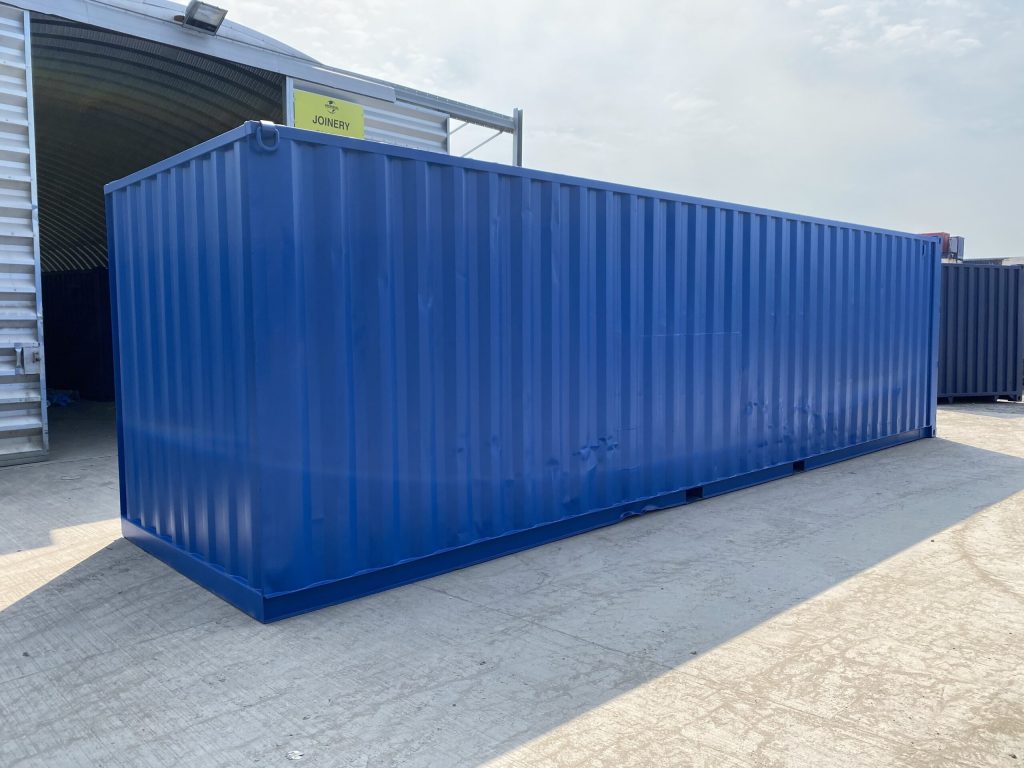The Hidden Secrets Of Container 30 Ft
Understanding the 30-Foot Container: Size, Specifications, and Uses
In today's fast-paced world, enhanced logistics and efficient storage solutions are essential for companies and individuals alike. Among the most versatile tools for achieving these goals is the shipping container, especially the 30-foot container. This article provides an extensive overview of 30-foot containers, covering their specs, utilizes, and benefits, along with a FAQ section to address typical concerns.
What is a 30-Foot Container?
A 30-foot container is typically utilized for carrying items and materials by land, sea, or air. This size strikes a balance in between space efficiency and freight capacity, making it a popular option among organizations and industries. While standard containers can be found in lengths of 20 and 40 feet, the 30-foot variant deals unique advantages for particular applications.
Requirements of the 30-Foot Container
Table 1 summarizes the general specifications of a 30-foot shipping container.
Specification
Information
Length
30 feet (9.14 meters)
Width
8 feet (2.44 meters)
Height
8.5 feet (2.59 meters) (Standard)
Weight
Roughly 4,500 kg (10,000 lbs)
Interior Volume
Around 1,928 cubic feet
Door Opening
7.5 feet x 7.5 feet (2.29 m x 2.29 m)
Material
Corten Steel (rust-resistant)
Storage Condition
Weatherproof and ventilated
Kinds Of 30-Foot Containers
In addition to the basic shipping container, 30-foot containers can be found in various types to match different shipping requirements:
- Reefer Containers: These are cooled units utilized to carry disposable items, such as foodstuff.
- Flat Rack Containers: Designed for heavy or large freight that can not fit in basic containers, they include collapsible sides.
- Open Top Containers: Allow for filling from above, suitable for tall freight.
- High Cube Containers: Offer additional height compared to basic containers, supplying extra storage space.
Advantages of Using a 30-Foot Container
There are numerous benefits to utilizing a 30-foot container for storage and transportation:
Versatile Size: The length strikes a balance in between density and appropriate storage capacity, accommodating different needs, from individual moves to equipment storage.
Cost-efficient: Due to their size, 30-foot containers might offer lower shipping and rental expenses compared to bigger alternatives.
Transport Efficiency: They can easily fit on standard trucks and ships, guaranteeing smooth logistics.
Sturdiness: Constructed from weather-resistant materials, they provide excellent defense for stored content.
Availability: Being much shorter than 40-foot containers, they can suit more constrained areas, making them appropriate for city settings.
Utilizes of 30-Foot Containers
The applications for 30-foot containers are broad, covering numerous sectors. Here are some noteworthy usages:
Storage Solutions: Ideal for companies needing short-lived or irreversible storage for inventory, tools, or devices.
Moving Houses: Great for domestic moves, providing ample space for furniture and personal products.
Building Sites: Frequently used as portable offices or on-site storage for building materials.
Pop-Up Shops: Can be transformed into mobile retail areas for seasonal sales or exhibitions.
Catastrophe Relief: Employed by humanitarian companies to carry products and help efficiently.
Secret Considerations When Choosing a 30-Foot Container
Here are some key elements to think about when picking a 30-foot container:
Condition: Containers can be new, used, or refurbished. It's essential to select based on your spending plan and requirements.
Purpose: Determine whether the container will be used for storage, transport, or specialized requirements like refrigeration.
Area: Consider where you will be positioning the container, as area restraints might affect availability.
Customization: Some containers can be customized for specific requirements, such as adding windows or doors.
Regularly Asked Questions (FAQs)
1. How much weight can a 30-foot container hold?
A 30-foot container normally has a maximum payload capability of around 27,000 pounds (around 12,200 kg), but the real capacity might differ based upon the container type and condition.
2. Can I lease a 30-foot container?
Yes, numerous business provide rental services for shipping containers, consisting of 30-foot designs. Rental options may vary from short-term to long-term contracts, ideal for various requirements.
3. Are 30-foot containers weatherproof?
Yes, shipping containers are built from weather-resistant products, making them ideal for outdoor storage without the threat of damage from rain, snow, or wind.
4. What is cogcontainersltd.com of a 30-foot container?
The cost can differ extensively based on factors such as condition (new vs. used), location, and modifications. Usually, rates can range from ₤ 2,500 to ₤ 5,000 for an utilized container, while new containers might cost more.
5. Can I carry a 30-foot container using a standard truck?
Many basic tractor-trailers can carry a 30-foot container, making it simpler to move the container across different areas.
The 30-foot container is an important asset within the shipping and logistics industry, offering an ideal balance of size, cost-effectiveness, and versatility. With numerous choices available— from standard storage to specialized setups— organizations and people alike can find significant applications for this size. Understanding the specifications, advantages, and possible usages of a 30-foot container can assist optimize supply chains and storage solutions, satisfying various needs across numerous sectors.
